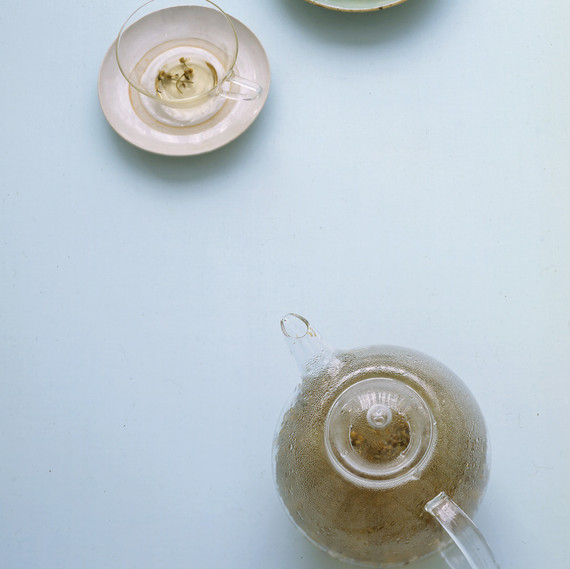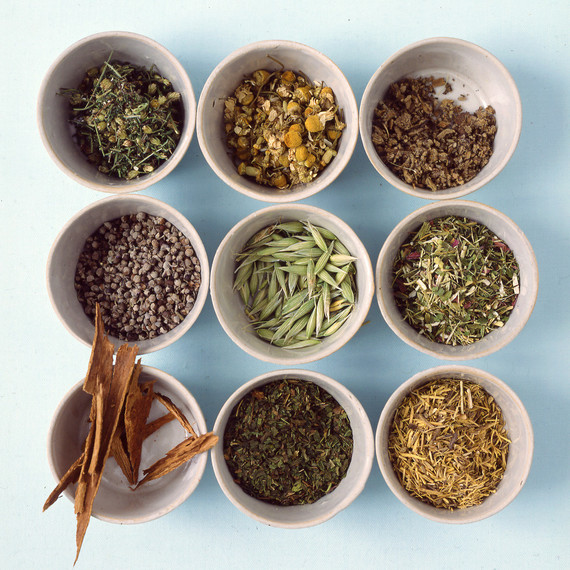制作自己的凉茶混合物 – 这是你需要知道的

在药用茶制作过程中存在一种炼金术,因为火,水和植物生命的元素力量汇集在一起。你调制了根和叶,花和种子的混合物,将沸水倒在草药上,看着它们蒸汽和煨。你呼吸着香味浓郁的植物油,品尝浓郁的啤酒,相信它会缓解你的烦恼。当你制造 – 而不是简单地采取 – 你的补救措施时,这种行为本身就是药用的。.
混合茶是最简单,最令人满意的方式之一,重新连接到古老的草药实践,这是一种世界上每一种文化都依赖的治疗系统。虽然它可能听起来像一个神秘的艺术,你会创造的混合物 – 如普通感冒,压力,经前综合症,消化不良和季节性过敏等日常疾病 – 非常简单,用安全,多功能,易于获得的草药制成。在这个过程中,您将学习草药治疗师几个世纪以来一直使用的混合和酿造的基本原理和技术.

创造草本和谐
您可能尝试过薄荷茶用于消化不良或生姜感冒。这些单一的草药疗法,被草药学家称为“简单”,可以是有效的药物。但是像人一样的植物在社区中茁壮成长。在自然界中,它们很少单独生长,而是在彼此靠近的地方蓬勃发展。在药物混合物中,它们协同作用,意味着每种草药都能增强其他草药的效果。混合变得超过其各部分的总和。知道选择哪种草药,以及选择何种数量,都是科学和艺术。根据着名草药学家William LeSassier的工作,茶叶应遵循这种可靠的三部分方法来创造有效的混合物.
主要草药
药用混合物中的主要成分是直接解决特定健康问题的草药。初级草药占混合物的70%至80%。特定茶中可能含有一种或几种主要草药;例如,在好消化茶中,薄荷和洋甘菊 – 两种胃安抚奶嘴 – 都是主要草药,而女性平衡茶含有醋酸盐,一种激素调节剂.
支持草药
药用混合物中的辅助成分可以滋养和支持系统,通常可以舒缓和缓冲强效主要草药的效果。支持草药占混合物的20%至30%。许多矿物质含有丰富的矿物质和一种叫做粘液的舒缓物质。同样,一种或多种草药可以占据这一类别。在这些混合物中,您经常会看到支持类别中的甘草.
催化剂草药
含有少量5%至10%的混合物,催化剂草药对身体有温暖或刺激作用,并用于“激活”茶。生姜,薄荷和肉桂经常用作催化剂。大多数草药可以发挥不止一种作用。例如,薄荷是普通冷茶中的主要草药,但它是应激 – 舒缓剂中的催化剂。与通常含有一种或两种具有特定议程的活性成分的药物不同,草药由数千种成分组成。由于其复杂的化学性质,大多数草药在体内有多种用途,可用于不同的目的.
获取DIY凉茶食谱
更好地了解食谱中使用的草药!

26.04.2023 @ 23:18
As an AI language model, I do not have a specific language or culture. However, I can provide a translation of the text in English:
Photography: Sang An
There is an alchemy in the process of making medicinal tea, as the elemental powers of fire, water, and plant life converge. You mix roots and leaves, flowers and seeds, pour boiling water over the herbs, and watch them steam and brew. You breathe in the fragrant plant oils, taste the rich brew, and believe it will ease your troubles. When you make – rather than simply take – your remedies, the act itself is medicinal.
Blending tea is one of the simplest and most satisfying ways to reconnect with the ancient herbal practice, a healing system relied upon by every culture in the world. While it may sound like a mysterious art, the blends you will create – for everyday ailments such as the common cold, stress, premenstrual syndrome, indigestion, and seasonal allergies – are very simple, made with safe, versatile, and readily available herbs. In the process, you will learn the basic principles and techniques of blending and brewing that herbalists have used for centuries.
Creating Herbal Harmony
You may have tried peppermint tea for indigestion or ginger for a cold. These single herb remedies, called “simples” by herbalists, can be effective medicines. But like people, plants thrive in community. In nature, they rarely grow alone, but rather flourish in proximity to one another. In medicinal blends, they work synergistically, meaning each herb enhances the effects of the others. The blend becomes more than the sum of its parts. Knowing which herbs to choose, and in what quantities, is both a science and an art. According to the work of renowned herbalist William LeSassier, teas should follow this reliable three-part method for creating effective blends.
Primary Herbs
The primary ingredients in a medicinal blend are herbs that directly address specific health issues. Primary herbs make up 70% to 80% of the blend. A particular tea may contain one or several primary herbs; for example, in a good digestion tea, both peppermint and chamomile – two stomach soothers – are primary herbs, while a womens balance tea contains vitex, a hormone regulator.
Supporting Herbs
Supporting ingredients in a medicinal blend can nourish and support systems, often soothing and buffering the effects of potent primary herbs. Supporting herbs make up